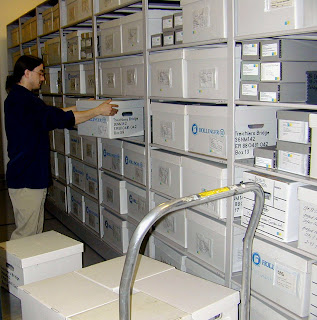 Indian Days at Fort Hunter
Indian Days at Fort HunterOur other main venue for public outreach is the Anthropology and Archaeology Gallery of The State Museum of Pennsylvania. Our Section is responsible for maintaining the exhibits in the Hall of Anthropology & Archaeology. This entails exhibit labels, lighting, and design components for the over 2300 artifacts on display. Recent improvements to the Gallery included the addition of two mannequins in our Delaware Indian Village, improvements to the color and design of our Ethnographic exhibit and replacement of costly fluorescent lighting to energy efficient LED lighting. Pending funding under the latest state budget is a new exhibit on the archaeological investigations at Fort Hunter and upgrades to the Delaware Indian Village. This Sunday, March 14th is Charter Day and the State Museum admission will be free. Stop in and view the original Charter of the Commonwealth of Pennsylvania and check us out in the Anthropology & Archaeology Gallery on the 2nd floor of the museum.
Another primary function of the Section is as the State Repository for Archaeological Collections recovered from Cultural Resource Management (CRM) Projects. CRM Projects are collections produced as the result of state and federally funded projects in which archaeological investigations are deemed necessary by the Bureau for Historic Preservation. These collections are available for academic and professional research, loans to approved non-profit institutions, and for educational presentations. The landowners of these collections have generously donated artifacts excavated on their property for these research and educational venues. Archaeological firms from throughout the United States conduct the necessary investigations to insure that evidence of past human behavior can be either preserved or salvaged prior to development.
 Route 15 Improvements Tioga County, PA - Keyhole structure
Route 15 Improvements Tioga County, PA - Keyhole structure
 Route 15 Improvements Tioga County, PA - Rim sherd section
Route 15 Improvements Tioga County, PA - Rim sherd section
Collections from avocational archaeologists and collectors are another essential component of our facility. We focused on some of these folks during the month of December during our “month of giving”. These collections are often from sites that have been destroyed by development or contain unusual artifacts collected throughout several generations. The documentation and records associated with these collections are especially important in helping us glean information about past human behavior. These donors recognize that although they have treasured these artifacts, it is better to keep the collection together than to allow them to be sold at auction or over the internet. Family members sometimes do not realize the importance of the documentation or the artifacts associated with these private collections and may discard critical provenience information, undoing years of work by the collector. We clean and catalog these artifacts and documents, and rehousing them in acid- free materials insuring their availability for generations to come.

Avocational donation of artfacts from Chester County, PA
We also participate in the annual conferences of The Society for Pennsylvania Archaeology, The Society for American Archaeology and The Mid-Atlantic Archaeological Conference all of which will occur over the next month or so. Presentations based on research of excavations at Fort Hunter, analysis of documentation and artifacts from Works Progress Administration sites excavated in the 1930’s and analysis of the Flint Run Paleoindian Complex sites in Virginia. Additional papers will be presented at these conferences based on research conducted on collections housed at The State Museum by professionals and students. These conferences are an excellent opportunity to hear fascinating reports on current research in anthropology and archaeology.
http://www.portal.state.pa.us/portal/server.pt/gateway/PTARGS_0_2_16932_2094_285101_43/http;/pubcontent.state.pa.us/publishedcontent/publish/cop_environment/phmc/communities/extranet/archaeology/phmcresearchucontent/kings_text.pdf
The motivation for us in this profession is the enthusiasm demonstrated by the public when they are able to learn about the past through archaeology. Bridging the past is often possible through an artifact as that is the physical evidence, but understanding the story of the people who made and used the artifact is the deeper link to our past. We strive to deliver this message to everyone we encounter and hope that our readers benefit from our passion for research, collections, exhibits and outreach as we continue to learn and share our common heritage.

No comments:
Post a Comment